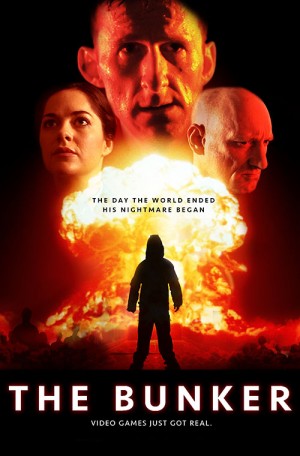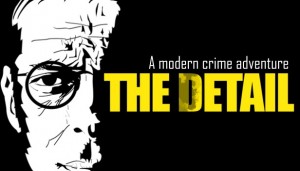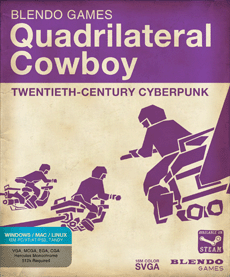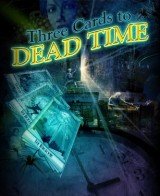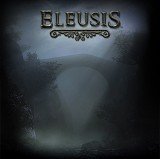Review for Silence
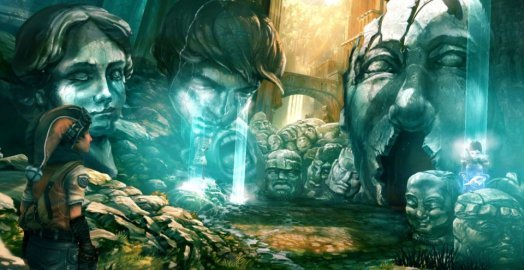
In times of trouble, have you ever wished you could just close your eyes and retreat to the world of your imagination, a magical world free of care and strife? In Silence, we see just how far imagination can take its young protagonists, and how it's never quite far enough. Daedalic's long-awaited follow up to The Whispered World is stunningly beautiful, deliciously atmospheric and totally adorable, filled by turns with wide-eyed joy and tragedy. The story could have benefited from a bit more breathing room, but it's nonetheless a memorable, haunting experience and a worthy successor.
If you haven't played The Whispered World yet but think you may someday, look away now. You don't absolutely need to have played the original in order to enjoy Silence – the early scenes fill you in on everything you need to know – but it's full of references and resonances that will only hit home if you have. It's also pretty much impossible to discuss the plot of the sequel without spoiling one of the first game's major twists, so you have been warned!
The story opens in a picturesque, snowy Alpine village. All half-timbered stone houses and children building snowmen, it's the picture of tranquility and a lovely place for Noah and his little sister Renie to grow up. Until, that is, the air raid siren goes off and the sky is filled with fighter planes, swooping down to unleash their bombs. Noah and Renie scramble back to the orphanage where they live and just manage to close the door of their bunker before the light from an explosion flares outside.
Huddled crying on the bed, Renie asks Noah to tell her the story of Silence, the imaginary land he conjured for himself in The Whispered World, and of Sadwick, the melancholy clown whose persona he adopted there. Noah was stuck in a coma at the time, and Silence was his mind's way of dealing with that. To Renie, though, it's a story of magic and wonder, and it comforts her to see her brother act it out.
Then another bomb drops, even closer this time, knocking them both out. Noah awakes to find the building crumbled around him, Renie gone and the power out – though for some reason the TV is still playing. Exploring in an attempt to find his sister, he finds himself not in a dank basement but in an enormous cavern filled with detritus from Silence, remnants of the destruction he wrought to finally escape and wake up from his coma. Weirder still, the jagged opening near the ceiling is a gaping mouth, and after climbing through he finds – somehow – lush grass and summer sunshine. Could this really be Silence, and if so, what does that mean for the two siblings in the real world?
As in reality, all is not well in Silence, with a false queen upon the throne, monstrous blank-faced Seekers roaming the land in search of a shard from a magical mirror, and only a small band of rebels standing in her way. Noah sets off in search of Renie, the mirror, and the queen, with only a caterpillar named Spot for company. It's a journey that will take in talking rocks, cryptic myths, carnivorous plants and cheeky schoolchildren. Travelling from the magnificent city of Kalimar to the lighthouse at the end of the world, the two children have much to learn and devastating choices to make.
Silence looks and sounds absolutely stunning; it's a true work of art. In fact, my first thought was that it feels like concept art brought to life. Where The Whispered World was like a beautiful 2D cartoon, here everything looks several steps more realistic, while still retaining a hand-painted quality. It also feels full of life: there are creatures everywhere, as well as rushing waterfalls, billowing smoke and leaves drifting on the wind. Motes of dust dance in shafts of sunlight, mist swirls, clouds drift. Locations range from sunlit uplands to dank misty hollows, from vertiginous mountain peaks to volcanic craters. It's a traditional fantasy world in many ways – Kalimar has elements ranging from a medieval marketplace to more Victorian-looking shops and plazas – but represents a lively, eclectic take on the idea. Each area has a definite personality, too, whether warm and inviting or dank and creepy; wherever you go, you get an instant feeling for the place.
The presentation uses three-dimensional characters against two-dimensional backgrounds, but the environments are layered and move at different speeds as the viewpoint shifts, giving a much more convincing 3D effect. Even though the world is composed of a series of single-screen locations, the camera shifts gently as you walk around, making everything feel unusually dynamic. Shadows and subtle depth-of-field effects add further to the sense of polish and care. All this loveliness does come with a bit of a price, though: each location takes up to 10-15 seconds to load, and the areas are small, typically 2-3 scenes each. Swooping vistas lead you from place to place and help you fit them into the overall landscape, but the limited exploration within each location can feel a little claustrophobic at times.
The music, too, is delightful, with a lush orchestral soundtrack built on gentle piano- and string-led melodies. It's peaceful and wistful for the most part, though with a definite undercurrent of sadness. That said, it can be playful, fearful or frantic when the occasion calls for it, scoring events in a confidently cinematic way. There's also a rich environmental soundscape that only enhances the feeling of abundant life.
I'm also happy to report that both the voice work and the translation are top notch. There's no hint that the script started life in German, and the actors do a great job of bringing it to life. The actress voicing Renie, in particular, manages to make her not just convincing (always tricky when adults try to voice children) but also full of wide-eyed innocence, wonder and warmth. Even Spot the caterpillar, limited to chirrups and burbling giggles, manages to be endearingly memorable. Returning from the first game, the bickering stone brothers Yngo and Ralv are another gruff, grumpy but entertaining highlight.
The interface is streamlined in some ways, and interestingly rich in others. There's no real inventory: while you can pick up some objects, it's only to use them nearby. Hovering the cursor over an object brings up its name and an animated icon showing the action you can take, which varies from picking it up to tasting it or applying an object you just picked up. In fact, the process of using objects can be simplified further: by default, clicking on an item brings up an outline of it where it can be used, if it’s in the same area. No need to decide what to do with it, just click and drag it across to the correct spot. This aid can be turned off, but it emphasises the fact that this is a game based around story, not brain-bending puzzles. Occasionally, pointing at something will replace the object name with a pithy comment, such as, "Show yourself, coward!" for the tree you're currently hiding behind.
Alongside that simplicity, though, Silence is a very physical game. You'll often find yourself having to lift, pull or push something, noted by arrows around the action icon. To do that, you have to click and drag with the mouse – and a proper long sweep too, not just a short flick. It's a neat way of highlighting something that's taking your character considerable effort to do. At other times, you'll have to keep your balance, indicated by a slowly filling circle that jiggles from side to side along an arc. Move the mouse to keep it centred on the arc and the circle will keep filling; let it drift too far to the side and it'll empty rapidly and you may fall off. This isn’t really a test of dexterity, being fairly gentle and forgiving, and even if you outright fail, the scene instantly resets to give you another go.
The most charming part of the interface, though, is Spot. As in the first game, he's a very adaptable caterpillar. For example, he can squash himself flat like a tapeworm, inflate into a bouncing ball, or slurp up nearby liquids – anything from water to lava to dragon snot. Switching between forms is simple and intuitive: click on him and swipe down to flatten him, swipe up to inflate him, or click on the liquid in question to have him drink it. There are other forms, too, which only occur in certain situations. Many of the puzzles revolve around finding creative ways to use Spot to get where you need to go.
Interestingly, the hotspot highlighter has been merged with the hint system. By default, pressing the spacebar gets you both hotspots and a hint for the current puzzle across the top of the screen. This makes a lot of sense, in that if you've resorted to looking for hotspots you missed, that probably means you're stuck and could also use a clue. If you prefer to go it alone, though, the hints can be turned off in the settings, leaving just the highlighter. That said, despite the detailed backgrounds I never really had to resort to pixel hunting in any case. One thing I would have appreciated is a proper save game option: like many modern titles, the game autosaves for you, with no opportunity to manually record your progress.
The puzzles are primarily environmental: working with Spot, pulling or pushing things, and only occasionally picking anything up. There are also a few standalone puzzles, such as balancing a bridge to get your group across or flying through the clouds. There's seldom much difficulty working out what to do, since there are never all that many viable options, but the payoffs frequently made me smile. You alternate between playing as Noah and Renie, and Renie takes such glee in everything she does. Something as simple as prising a gate open or going in search of bitter berries becomes an exercise in playful wonder. Noah, by contrast, is a bit of a grumpy teen, but even he has his moments. Spot tags along most of the time, too (even getting a couple of scenes to himself), trilling cheerfully all the while.
One casualty of all this play, though, is momentum: the plot rarely really feels like it's picking up steam. Instead, it's as if Renie in particular is just wandering through the world, smelling the flowers (sometimes literally!) and enjoying the journey. Maybe that's because, as Noah remarks at one point, if he's the hero of his own story everything should work out. And if everything's going to work out, what's the rush? Noah's old enough to appreciate and be worried by what Silence represents, but Renie's mostly just tripping along having a fun time, the full impact of their situation only really sinking in as the end nears. Rebel Kyra has a bit more fire in her heart, having had everything taken from her by the false queen, but even she can't chivvy our heroes into any real sense of urgency.
The story also hints at more than it actually makes explicit, making it seem a little threadbare at times. It's like a series of pretty vignettes with just enough of a narrative thread to tie them together but with much of the detail and backstory left out. Kyra's losses, for example, come out in the odd remark here and there in one short scene, but we're left to fill in the rest ourselves. The other supporting cast members are similar: likable and with clear roles and motivations, but more sketched than filled out. Likewise, we follow cryptic clues that sound beautiful and poetic but don't have enough grounding to fully resonate. Occasionally, minor threads just get dropped midway. It's a substantial game at around 6-8 hours, but even so, it could have done with more time to really round things out. What's offered is well-written, and Noah and Renie's journeys in particular tug at the heartstrings, but it feels like a pared-back version of what could have been.
In the end, though, Silence is a genuinely moving, emotional and beautiful experience. The pace may be a little languid and at times it left me wanting more, but even that is a compliment of sorts. The tone of melancholy that ran through the first game is leavened this time by the addition of playful Renie, and the experience is even more polished and cinematic. You could well need a tissue by the end, but for all but the hardest-hearted this sequel comes heartily recommended.
WHERE CAN I DOWNLOAD Silence
Silence is available at:
We get a small commission from any game you buy through these links (except Steam).Our Verdict:
Silence offers a captivating mix of innocent delight layered over an undercurrent of wistful sadness, wrapped up in lovely art and music. The story could have done with a bit more flesh on its bones, but it’s filled with nuance and heart.



_capsule_fog__medium.png)











